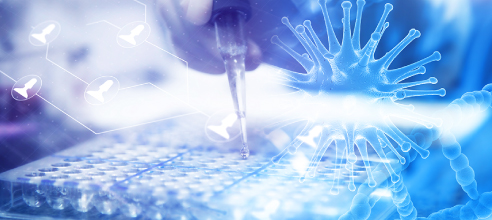How to Make and Transform Electro-Competent Cells
Competence is a special physiological state of a bacterial cell in which a cell can take up exogenous DNA from the surrounding environment and is not easily decomposed by a restriction endonuclease inside the cell.
Using specific techniques in a laboratory setting, bacterial cells can be transformed into the state of competence for molecular biology applications. For example, the electrical method takes advantage of the low-permeability of bacterial cells in their rapidly-growing phase of their life cycle. By shocking bacteria at this stage with high-intensity transient electric field, the negatively-charged DNA passes through the cell membrane and enters the cell.
DIY Protocol for Generating Electro-Competent Cells
| Reagents | Equipment |
Bacterial cells LB agar lates LB medium Sterile dH2O Glycerol (10%) | Shaker Stationary and shaking incubator Refrigerated centrifuge Ice bucket with ice and liquid nitrogen Tubes (centrifuge, test, Eppendorf) |
Procedure
1. Take frozen cells from freezer and inoculate them on an LB plate at 37°C overnight or for 16~18 hours.
2. Once colonies are formed, pick a single colony from the plate and inoculate in a test tube containing 3 mL of LB medium. Incubate overnight at 37°C for 12~16 hours on a shaker (200~300 r/min).
3. Add 100ul of the overnight culture into a 250 ml flask containing 50 ml of LB medium and incubate at 37°C about 2~3 hours (200-300 r/min).
4. After 2~3 hours when the 600 nm OD value reaches 0.4~0.5, transfer the culture into a cold 50 ml centrifuge tube and incubate on ice for 10-15 minutes. Make sure to maintain the temperature at 4°C and never let the culture warm up again after this step until you are ready for transformation.
5. After 10~15 minutes, move the 50 mL centrifuge tube into a pre-cooled (2~4°C) centrifuge machine and centrifuge at 3000-4000 rpm for 10 minutes.
6. Discard the supernatant and add 10 mL of ice pre-chilled ddH2O to the centrifuge tube. Gently re-suspend bacterial cells by swirling and proceed with centrifuging at 3000~4000 rpm for 10 minutes.
7. Repeat step 6.
8. Discard the supernatant and add 1mL of 10% glycerol to re-suspend the bacteria. Transfer cells into 10 Eppendorf tubes and snap-freeze in liquid nitrogen to maintain efficiency.
9. Proceed with transformation or store cells at -80°C.
Protocol for Transforming Electro-Competent Cells
| Reagents | Equipment |
Bacterial competent cells DNA solution LB or SOC medium LB agar plate with antibiotic | Shaker Stationary and shaking incubator Refrigerated centrifuge Ice bucket with ice Tubes (centrifuge, test, Eppendorf) Electroporator |
Procedure
1. Add an appropriate amount of the DNA solution into a vial of competent cells and mix gently.
> If using frozen competent cell, first thaw them on ice for about 15~20 minutes.
> Total DNA volume should be less than 10% of the competent cells volume.
> In general, 10 pg~100 ng DNA is enough for a successful transformation.
2. Set the electroporator to a voltage suitable for the bacterial strain you use (usually 1.7-2.5 kv) and pre-chill electroporation cuvettes.
3. Transfer the mixture into the pre-chilled cuvettes. Place cuvettes into the electroporation module and press pulse.
4. Immediately add 975 µL of 37°C LB/SOC medium and incubate in the 37°C incubator for 1 hour.
5. Plate all or part of the culture on one or several LB agar plates containing the appropriate antibiotic.
6. It is best to have at least one plate with 50 µL of culture to avoid overgrowth.
7. Incubate plates at 37°C overnight.
Tips from the MolecularCloud™ Team
1. Make sure to turn on the refrigerated centrifuge in advance.
2. Pre-cool Eppendorf tubes at -20°C before storing your competent cells to maintain the efficiency of competent cells.
3. Make sure to use high-quality glycerin when preparing your stock; glycerin protects cells from damages incurred by ice crystals.
4. Avoid frequent freezing and thawing of competent cells as it will reduce the transformation efficiency.
5. In general, the efficiency of stored competent cells will remains high up to 7 days of storage at -80°C. After that, the efficiency will gradually decrease as the storage time increases.
6. Use enough ddH2O to wash the cells; too much ion residue will create strong electrical current and kill the competent cells.
- Like (2)
- Reply
-
Share
About Us · User Accounts and Benefits · Privacy Policy · Management Center · FAQs
© 2025 MolecularCloud




